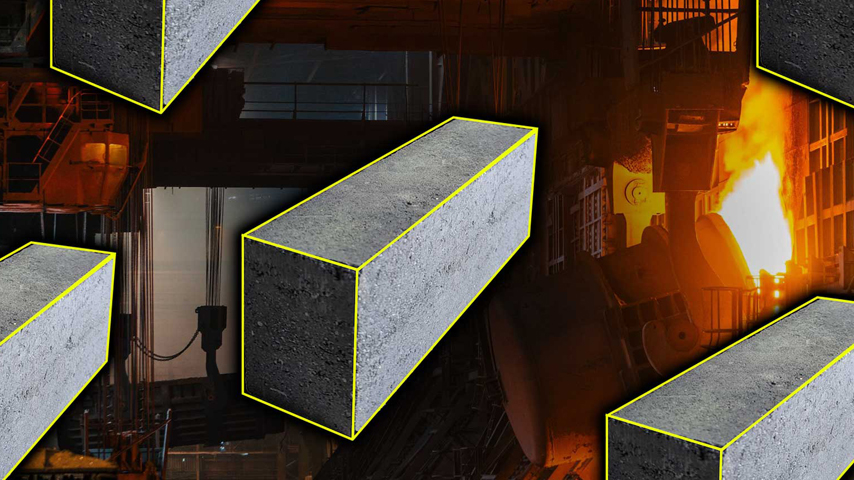Nanowire Biosensors Could Slash Drug Development Costs
Nanowire Biosensors Could Slash Drug Development Costs
Advanced Silicon Group (ASG) is commercializing a breakthrough technology that could dramatically speed up protein sensing while cutting costs, promising faster, more efficient drug development.
At times, engineering a solution to a specific problem leads to opportunities in other applications. That’s the case for the Massachusetts Institute of Technology (MIT) alumna Marcie Black, who transferred her thesis research in optical properties of nanowires used in solar cells into launching a biosensor startup that promises to reduce the time and cost of drug development.
In 2015, Black, along with Bill Rever, spun Advanced Silicon Group (ASG) out of another firm she had founded that was developing nanostructured solar cells, applying that same technology to protein sensing.
ASG makes biosensors that detect the host cell proteins created during the pharmaceutical development process. Sometimes those host cell proteins can be toxic, even in very small amounts. Traditionally, the industry relies on Enzyme-Linked ImmunoSorbent Assay (ELISA) testing to detect, and (quality) control those proteins. That labor-intensive process accounts for more than 50 percent of the time and cost to develop drugs, said Marissa Gillis, a research analyst at MIT and member of Black’s team at ASG. She said ASG’s “technology is able to do the detection faster at much less of a cost and is more sensitive.”
ASG’s biosensors are different because they use silicon nanowires to bind antibodies to proteins, allowing them to be measured electronically to determine concentration levels.
“Technology is different from legacy system technologies in three keyways,” Black said.
First is the electrical measurement, which she says is superior to traditional optical measurement for several reasons.
“Society’s gotten really good at being able to measure very small signals that are electrical, and also quantitative measurement is easier,” Black said, as it eliminates the step of converting optical measurements in ELISA testing to electrical.
You May Want To Read: Blog: Domestic Pharma Manufacturers Look to Expand
The second factor is that ASG’s biosensors use silicon. “This means we can make use of the whole infrastructure that's in place for silicon,” Black said. This also allows for the biosensors to be made very small, as well as enabling a rapid scale up of manufacturing processes.
“We get 2000 sensors for every lot that we make,” she said.
“Silicon also has the advantage that you can put many different sub sensors onto the same chip. The industry is good at packing lots of different things in a small area, so therefore, we can test for multiple proteins at once on the same chip,” Black said.
The third difference is that nano texturing increases the surface area to volume ratio, which makes the sensor more sensitive to its environment and helps it detect very low levels of proteins.
Even though there are a lot of companies pursuing the biosensor market, Gillis said they’re confident of ASG’s position because of the huge need for cheaper, faster biosensing. And biosensors are used everywhere.
“Our technology can fit the needs of so many different places,” said Gillis. Beyond the pharmaceutical industry, biosensors are also used in agriculture and in a variety of products such as cosmetics, she added.
“It's very much a platform technology where we think we could make a very large impact,” Black added. “Health care, agriculture, drug development, even biofuels, any anything food, anything that uses biology, we can contribute,” Black said.
Black said she’s excited to get to the point where we can test our health on a daily basis though automatic monitoring, similar to how levels of Covid are tested in a community’s wastewater.
“We're literally flushing down valuable information in the toilet every day,” she said. “Automatic monitoring of different biomarkers would completely be a game changer in how we maintain our health,” she said.
Discover the Benefits of ASME Membership
As the word is getting out about ASG’s technology they are receiving a lot of interest. Gillis said ASG is receiving inquiries from other companies and organizations about using their biosensors to test their own materials, on average once or twice a week. Earlier this year ASG announced a partnership with Axogen, a company that is working to develop products for peripheral nerve repair.
“In the long run, I really want to partner with people who are experts in the field and help them develop the sensor for their application and then allow them to commercialize it in their field of expertise,” Black said. She said transferring to a manufacturing line has provided a breakthrough in their efforts to improve the repeatability of the sensor, opening new markets for others who may want to use silicon nanowire technology.
ASG is an example of leveraging an academic network to commercialize engineering research, even if it leads down a different path. Black said she encourages engineers who are earlier in their training or careers not to think of themselves as just one discipline but use their engineering backgrounds as a basis to learn and contribute to interdisciplinary fields.
“What we're doing is so interdisciplinary and includes mechanical engineering, and electrical computer science, physics, semiconductor engineering, that literally, everyone has to learn something,” she said. “No one comes here knowing everything.”
And that intersection of different domains is the most interesting aspect of engineering today, she said. “When people are choosing their career path, they shouldn't focus on what their background, but moreso about their passion.”
Nancy Kristof is a technology writer in Denver.
In 2015, Black, along with Bill Rever, spun Advanced Silicon Group (ASG) out of another firm she had founded that was developing nanostructured solar cells, applying that same technology to protein sensing.
ASG makes biosensors that detect the host cell proteins created during the pharmaceutical development process. Sometimes those host cell proteins can be toxic, even in very small amounts. Traditionally, the industry relies on Enzyme-Linked ImmunoSorbent Assay (ELISA) testing to detect, and (quality) control those proteins. That labor-intensive process accounts for more than 50 percent of the time and cost to develop drugs, said Marissa Gillis, a research analyst at MIT and member of Black’s team at ASG. She said ASG’s “technology is able to do the detection faster at much less of a cost and is more sensitive.”
ASG’s biosensors are different because they use silicon nanowires to bind antibodies to proteins, allowing them to be measured electronically to determine concentration levels.
How ASG’s sensors stand out
“Technology is different from legacy system technologies in three keyways,” Black said.
First is the electrical measurement, which she says is superior to traditional optical measurement for several reasons.
“Society’s gotten really good at being able to measure very small signals that are electrical, and also quantitative measurement is easier,” Black said, as it eliminates the step of converting optical measurements in ELISA testing to electrical.
You May Want To Read: Blog: Domestic Pharma Manufacturers Look to Expand
The second factor is that ASG’s biosensors use silicon. “This means we can make use of the whole infrastructure that's in place for silicon,” Black said. This also allows for the biosensors to be made very small, as well as enabling a rapid scale up of manufacturing processes.
“We get 2000 sensors for every lot that we make,” she said.
“Silicon also has the advantage that you can put many different sub sensors onto the same chip. The industry is good at packing lots of different things in a small area, so therefore, we can test for multiple proteins at once on the same chip,” Black said.
The third difference is that nano texturing increases the surface area to volume ratio, which makes the sensor more sensitive to its environment and helps it detect very low levels of proteins.
Even though there are a lot of companies pursuing the biosensor market, Gillis said they’re confident of ASG’s position because of the huge need for cheaper, faster biosensing. And biosensors are used everywhere.
“Our technology can fit the needs of so many different places,” said Gillis. Beyond the pharmaceutical industry, biosensors are also used in agriculture and in a variety of products such as cosmetics, she added.
“It's very much a platform technology where we think we could make a very large impact,” Black added. “Health care, agriculture, drug development, even biofuels, any anything food, anything that uses biology, we can contribute,” Black said.
A platform for many industries
Black said she’s excited to get to the point where we can test our health on a daily basis though automatic monitoring, similar to how levels of Covid are tested in a community’s wastewater.
“We're literally flushing down valuable information in the toilet every day,” she said. “Automatic monitoring of different biomarkers would completely be a game changer in how we maintain our health,” she said.
Discover the Benefits of ASME Membership
As the word is getting out about ASG’s technology they are receiving a lot of interest. Gillis said ASG is receiving inquiries from other companies and organizations about using their biosensors to test their own materials, on average once or twice a week. Earlier this year ASG announced a partnership with Axogen, a company that is working to develop products for peripheral nerve repair.
“In the long run, I really want to partner with people who are experts in the field and help them develop the sensor for their application and then allow them to commercialize it in their field of expertise,” Black said. She said transferring to a manufacturing line has provided a breakthrough in their efforts to improve the repeatability of the sensor, opening new markets for others who may want to use silicon nanowire technology.
ASG is an example of leveraging an academic network to commercialize engineering research, even if it leads down a different path. Black said she encourages engineers who are earlier in their training or careers not to think of themselves as just one discipline but use their engineering backgrounds as a basis to learn and contribute to interdisciplinary fields.
“What we're doing is so interdisciplinary and includes mechanical engineering, and electrical computer science, physics, semiconductor engineering, that literally, everyone has to learn something,” she said. “No one comes here knowing everything.”
And that intersection of different domains is the most interesting aspect of engineering today, she said. “When people are choosing their career path, they shouldn't focus on what their background, but moreso about their passion.”
Nancy Kristof is a technology writer in Denver.



